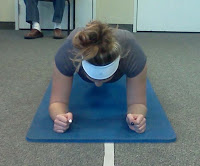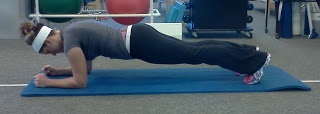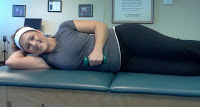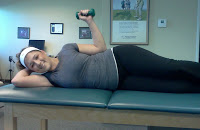Five Exercises to Avoid Injury and Improve your Golf Swing
As the cold air breaks and returns to nicer golf weather, the courses will be filled with eager golfers looking to take advantage. But what can you do to avoid that dreaded injury that could sideline you during golf’s busiest and nicest season? Further, what easy exercises can you do to improve your golf swing?
Ryann Roberts, DPT, CGFI, owner and physical therapist at AZOPT has a few key exercises to make the return to the fairways the safest as possible.
Your core – simply, your body minus your legs and arms – is the most important part of a strong golf game. The power in your swing comes from your core and hips. The ability to balance and shift your weight correctly through your swing comes from your core. The strength to get through playing 18 holes of golf comes from your core. When you’re stable in the core, you can swing as hard as you want, and the ball will go straight.
Beyond have a strong core, you must have good shoulder stability and overall mobility. The key to good golf is being able to make your full turn, get the club in the right position, and then have the strength to complete the swing. Here are four exercises to get you started in the right direction to avoid injury while hopefully improving your golf swing:
Exercise #1 – Front Plank
Equipment Needed: None
Muscles Trained: This is an isometric (static) core exercise that will strengthen the abdominals, back, and shoulders.
Description: Put your body in a push up position with your body’s weight on your forearms, elbows, and toes and hold for 5 to 30 seconds. There are many variations such as the side plank and reverse plank, which involve a higher degree of difficulty. Make sure your butt stays neutral and does not sag below your hips or rise above your hips and that your core stays contracted throughout the exercise.
Reps: Perform 5-10 daily
How will this translate into your golf game? The plank is a basic core strengthener that will help improve your balance during your swing.
Exercise #2 – Hip Flexor Stretches
Equipment Needed: Towel, if needed
Muscles Trained: Your hip flexors, located on your upper thighs, just below your hipbones, which allow you to lift your knees and bend at the waist.
Description: Begin by kneeling on your right knee (use a towel to cushion your kneecap, if necessary). Place your left foot in front of you, bend that knee, and place your left hand on your left leg for stability. Your right hand should be placed on your right hip, keeping you from bending at the waist. Make sure your back is straight and your core is tight. Sink, as if trying to touch your groin to your front heel, being careful not to extend your knee over your toe. You should feel the stretch in your right hip flexor. Hold this stretch for 30 seconds, and then switch legs and repeat.
Reps: 3-4 reps with each leg, 2 or 3 times per day
How will this translate into your golf game? According to Ryann, “this stretch will reduce stress on your back and allow you to make complete turns while maintaining your stable base.”
Exercise #3 – Corner Pectoral Stretch
Equipment Needed: Two walls, usually behind a closed door
Muscles Trained: This stretch works your pectoral (chest) muscles. By altering the position of your arms, the stretch will focus on different parts of the chest muscles.
Description: Stand facing the corner with your elbows at shoulder height. Place your forearms, elbows, and hands against the wall with your elbow at a 90 degree angle. Lean inward and hold for 15 seconds.
Reps: 6-10 reps daily
How will this translate into your golf game? “This stretch helps to set your shoulders in the proper position giving you better shoulder mobility and rotation,” says Ryann.
Exercise #4 – Side Lying Shoulder External Rotations
Equipment Needed: none up to light weights
Muscles Trained: This exercise promotes scapular (shoulder blade) movement and stability and reduces the risk of shoulder injuries. Also strengthens the rotator cuff and the posterior deltoid.
Description: With either no weight or a light dumbbell, lie on your side with the dumbbell in the hand of your upper arm. Position your upper arm’s elbow against your ribs to avoid any other movement except external rotation. Simply rotate your arm through the full range of motion, keeping your scapula (shoulder blade) retracted throughout the entire exercise. Do not allow your elbow of the upper arm to drift away from your body.
Reps: 2 or 3 sets of 20 reps each arm daily
How will this translate into your golf game? “Since the shoulder is a high mobility joint, this exercise will give you better shoulder stability improving the strength that will help you achieve better posture and scapular (shoulder blade) control. Ultimately, this will assist your follow through and help with more consistent ball striking,” says Ryann.














